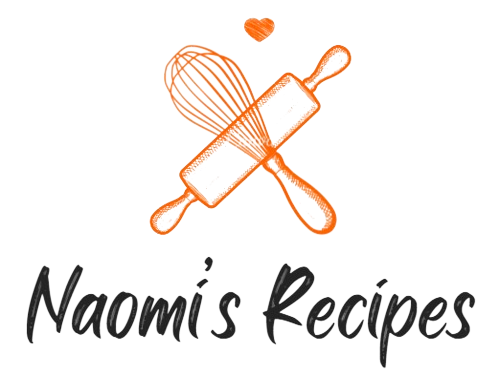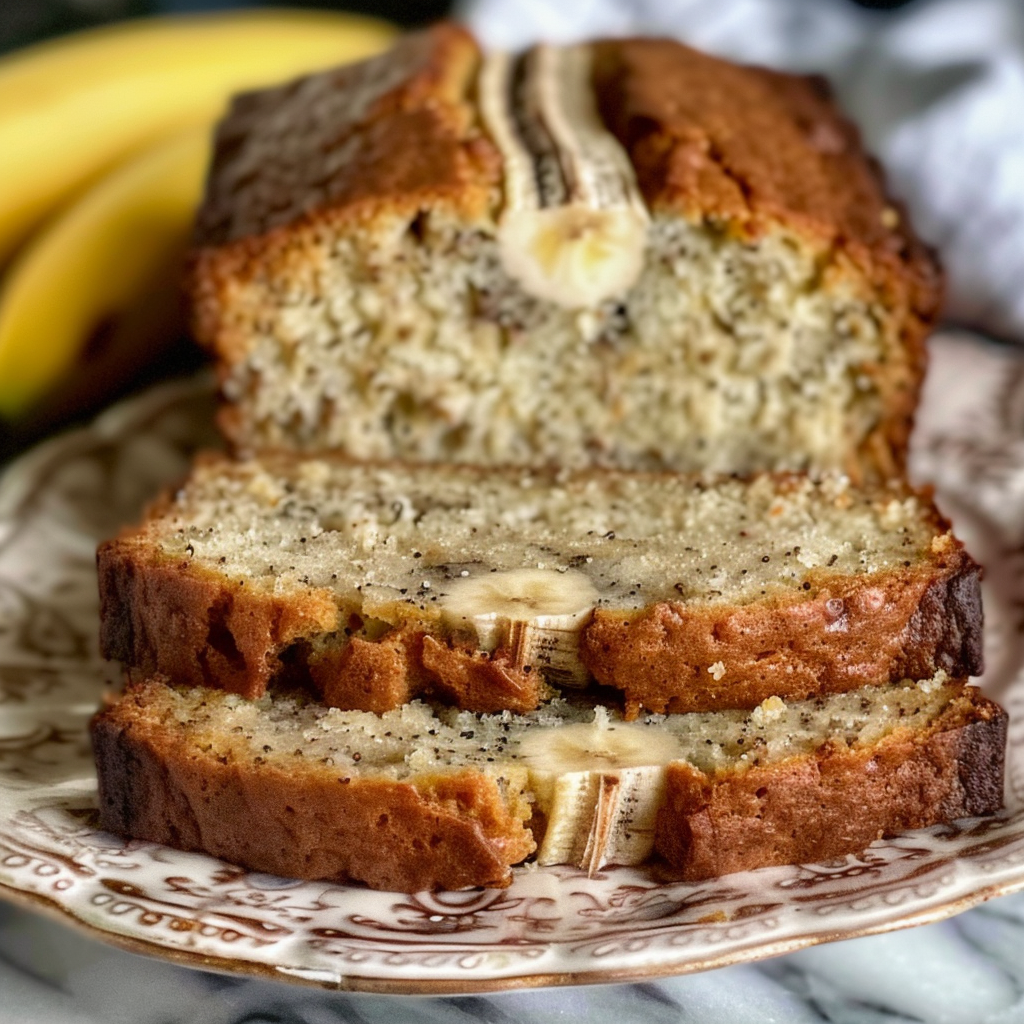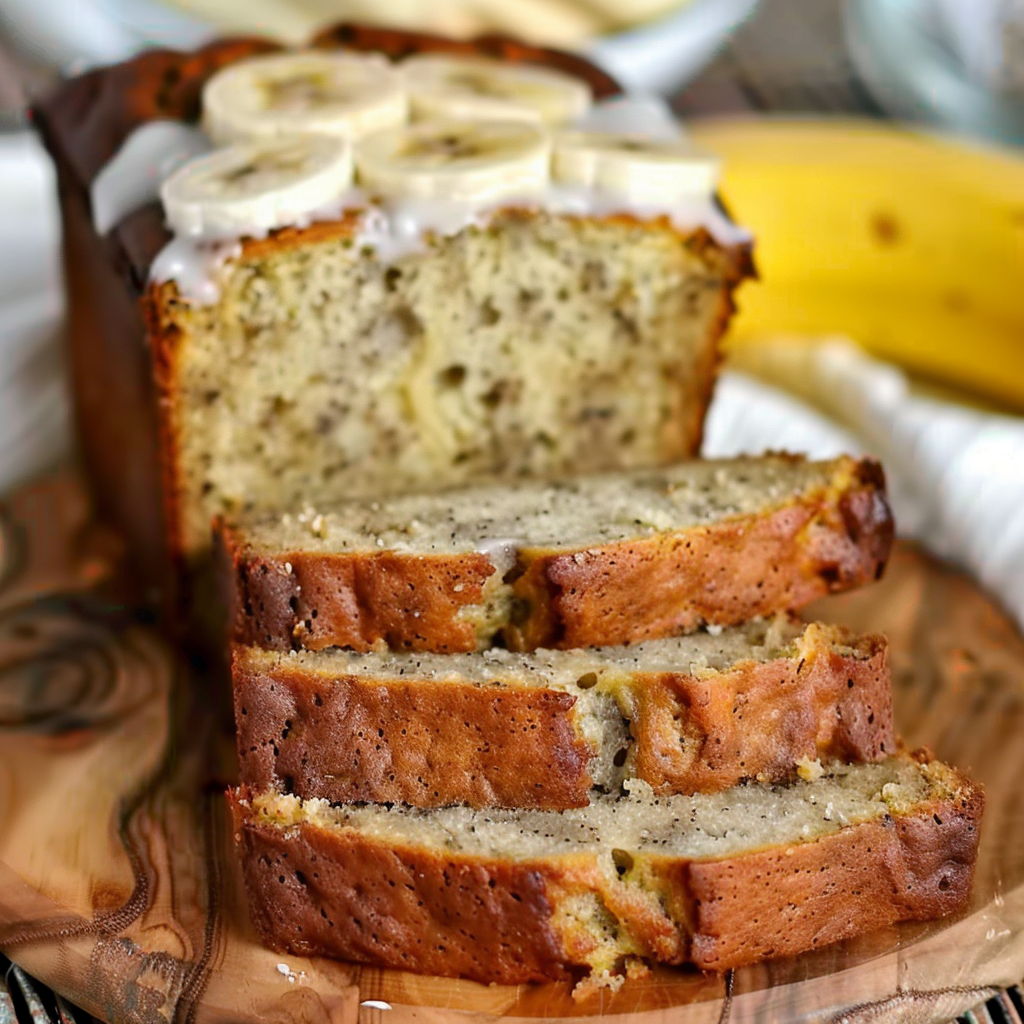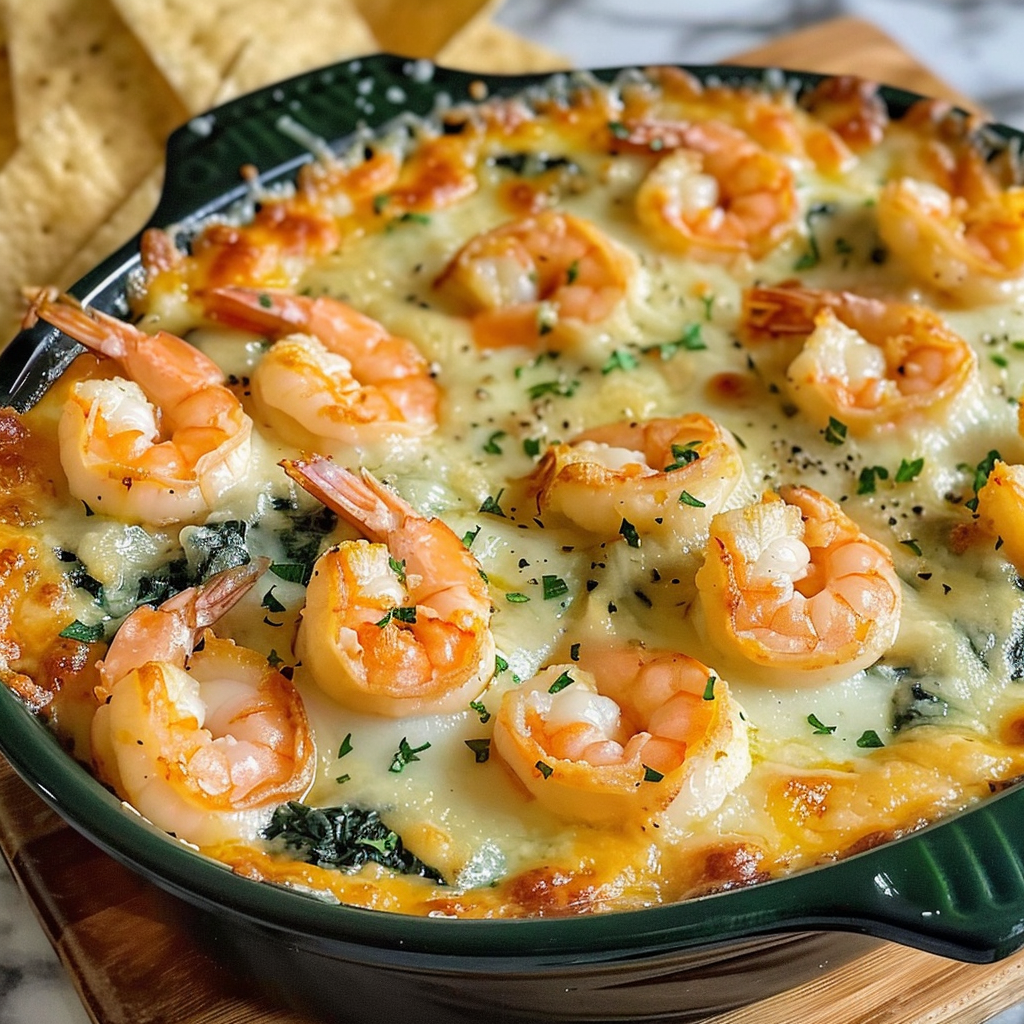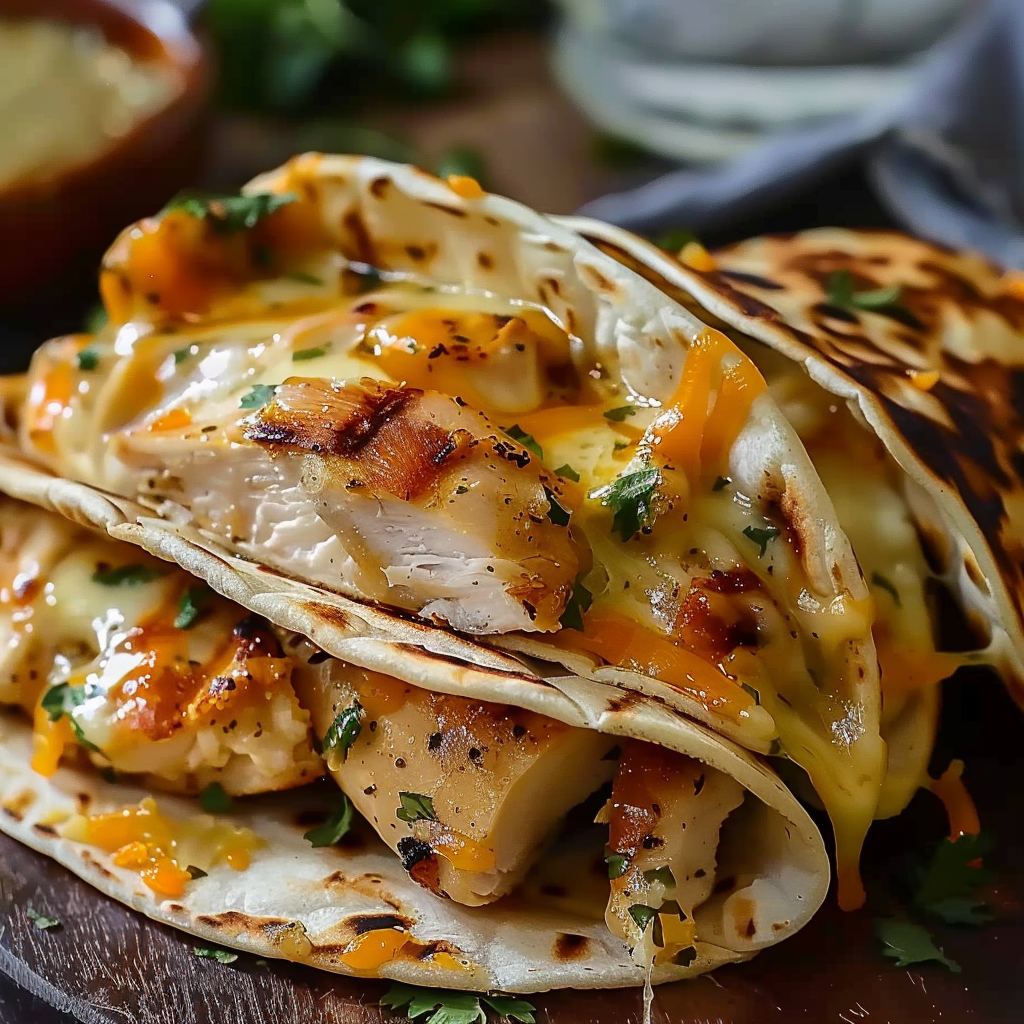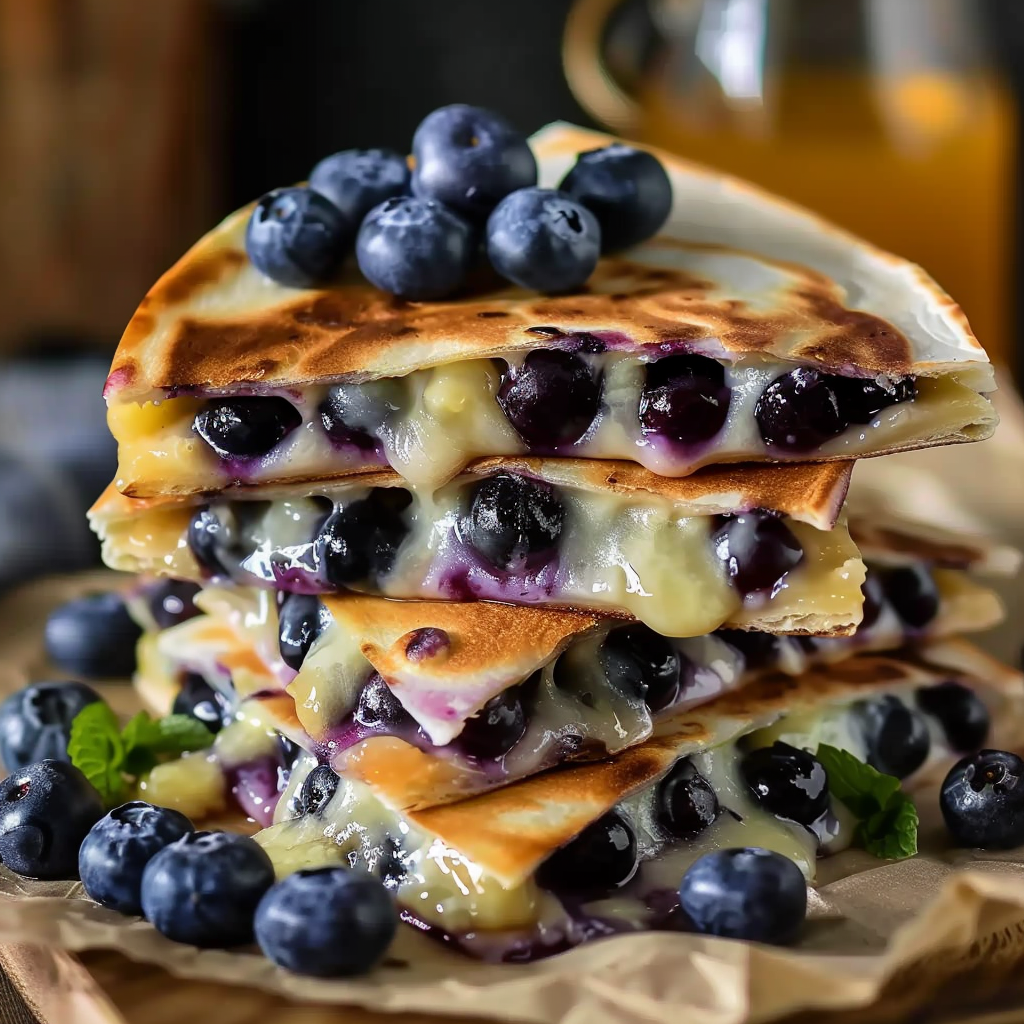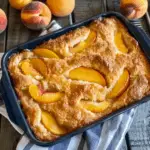Classic Banana Bread
Few baked goods evoke comfort and nostalgia quite like a slice of homemade banana bread. Its naturally sweet flavor, moist crumb, and rich aroma make it a staple in kitchens around the world. Whether you enjoy it warm with a pat of butter or as a quick breakfast bite, banana bread delivers a deeply satisfying experience that’s both simple and indulgent.
This classic banana bread recipe brings a Southern twist with the addition of chopped walnuts or pecans, adding crunch to every bite. What sets this version apart is its balance of flavor and texture—moist, but not soggy; sweet, but not overwhelming. It’s the kind of loaf that reminds you of something you’d find in a cozy local bakery, fresh out of the oven.
The recipe uses staple pantry ingredients like all-purpose flour, sour cream, and ripe bananas, but it’s the method that makes it shine. If you’re wondering what gives this loaf its tender crumb, it’s the way each ingredient is carefully incorporated to create a balance between structure and softness. For a breakdown of ingredient functions and how they work together, you can explore flour types and their uses to understand why all-purpose flour offers the ideal consistency for this loaf.
As part of Southern cuisine, banana bread reflects the region’s love of comforting, richly textured bakes that are both humble and deeply flavorful. With a nod to tradition and a few modern tweaks, this guide will walk you through the essentials of making perfect banana bread every single time. Curious about variations or tips from expert bakers? Visit curated boards like Pinterest’s banana bread collection for even more inspiration.
Why This Banana Bread Recipe Works
What makes this banana bread recipe a reliable go-to is its thoughtfully balanced blend of ingredients and baking techniques that ensure a bakery-style finish every time. Each component contributes to the loaf’s rich flavor, tender texture, and consistent rise. Whether you’re a beginner baker or a seasoned pro, understanding the why behind the ingredients helps you achieve a perfect crumb and avoid common banana bread pitfalls.
-
Moisture and richness from ripe bananas and sour cream: The mashed bananas offer not only natural sweetness but also keep the bread moist without being dense. The inclusion of sour cream adds a slight tang while boosting the tenderness. Its acidity also reacts with baking soda to promote a soft, light rise. Learn more about how sodium bicarbonate functions as a leavening agent in baked goods by visiting this baking soda article.
-
Structure and balance from all-purpose flour: All-purpose flour provides the right balance of protein for a loaf that holds its shape but still feels soft when sliced. It’s the preferred flour for quick breads like banana bread due to its moderate gluten content. For context, explore more on its role in quick breads like banana bread and others.
-
Flavor depth from butter and vanilla extract: Unsalted butter gives the bread a rich flavor and luxurious mouthfeel. Combined with vanilla extract, it creates a deeper flavor profile that elevates the simple banana base. For a better understanding of how vanilla extract adds complexity, check this resource on vanilla extract.
-
Customizable add-ins: The base recipe is delicious on its own, but the addition of chopped walnuts or pecans introduces a crunchy texture that balances the soft crumb. Nuts are a classic addition in many Southern recipes. If you want to explore the culinary use of nuts further, this overview of culinary nuts provides insight into popular options and flavor pairings.
-
Simplicity with room for creativity: This loaf can easily be adjusted to become chocolate chip banana bread, gluten-free banana bread, or even a vegan version with the right substitutions. If you’re looking for visual inspiration or creative modifications, check out curated ideas on Pinterest’s banana bread variations.
-
Southern influence: Incorporating elements of Southern cuisine, this recipe reflects a love for warm, hearty baking with a homey feel. Southern banana bread often includes pecans and a hint of cinnamon, offering nostalgic warmth in every bite.
This recipe isn’t just about tossing ingredients into a bowl—it’s about building flavor and texture through technique. Using room temperature ingredients, properly creaming the butter and sugar, and folding the dry mix gently into the wet all ensure a loaf that’s never tough or dry. Each method serves a purpose, which we’ll explore in more depth in the step-by-step section.
Ingredient Breakdown & Substitution Tips
A successful loaf of homemade banana bread starts with understanding the role each ingredient plays. This section explores each component of the recipe, providing not only its function but also reliable substitution options for dietary needs or taste preferences. Mastering these elements ensures that your banana bread is always moist, flavorful, and has a beautifully tender crumb.
Bananas
-
Why ripe bananas matter: Ripe, spotty bananas are high in natural sugars and soft enough to blend smoothly into the batter, creating moisture and sweetness.
-
Quick ripening tip: To ripen bananas fast, place them in a 300°F (150°C) oven for 15–20 minutes or store them in a paper bag overnight.
-
Substitution: If short on bananas, you can replace one banana with ½ cup of unsweetened applesauce or pumpkin purée, though it will slightly change the flavor.
Explore more about the fruit’s structure and varieties through this banana reference.
Fats: Butter vs. Oil
-
Unsalted butter: Provides flavor and helps with structure by trapping air during creaming. It also lends richness to the loaf.
-
Substitution: Melted coconut oil or vegetable oil can be used for a slightly different texture and added moisture.
-
Flavor impact: Using oil results in a softer, denser crumb, while butter creates a fluffier, lighter loaf.
Dairy: The Power of Sour Cream
-
Moisture + acidity: Sour cream adds richness while its acidity balances the leavening reaction with baking soda, giving the bread a soft, domed rise.
-
Alternatives: Plain Greek yogurt (full-fat) or buttermilk are great substitutes that maintain moisture without affecting taste.
Flavor Enhancers
-
Vanilla extract: Deepens the overall flavor and enhances the banana notes. You can read more about its composition and culinary use in this vanilla extract guide.
-
Cinnamon (optional): A touch of ground cinnamon adds warm spice, making this version feel even more like a Southern banana bread.
Leavening: Baking Soda
-
Function: Reacts with sour cream’s acidity to create bubbles that lift the loaf during baking.
-
Important tip: Do not substitute with baking powder unless altering the other acidic ingredients. Learn more about its chemical function in this baking soda entry.
Dry Ingredients: All-Purpose Flour
-
Structure: All-purpose flour provides the ideal balance for quick breads, keeping the crumb sturdy yet tender.
-
Alternatives: For a gluten-free option, substitute a 1:1 gluten-free baking mix. For more insights into flour types, visit this flour explanation.
Optional Add-ins
-
Chopped nuts: Walnuts or pecans add crunch and a slightly bitter contrast to the sweetness. They are common in Southern-inspired recipes.
-
Other mix-ins: Try chocolate chips, dried cranberries, or coconut flakes for texture and variety.
For visual inspiration and recipe combinations, explore Pinterest’s banana bread boards.
By mastering how these ingredients interact, you’re not just following a recipe—you’re learning how to craft a consistently perfect loaf. From understanding how quick breads work to choosing the right substitutions, this foundational knowledge sets you up for success. Want to explore more about these types of recipes? See this comprehensive guide on quick breads.
Tools You’ll Need
To achieve consistent, bakery-style banana bread results, having the right tools on hand makes all the difference. While this recipe is simple and doesn’t require advanced equipment, using the proper bakeware and utensils ensures even mixing, uniform baking, and easy cleanup.
-
Mixing bowls: Use a large bowl for the wet ingredients and a medium one for the dry. This helps prevent overmixing, which can lead to dense bread.
-
Whisk and rubber spatula: A whisk helps incorporate air into the eggs and combines ingredients smoothly. The spatula is ideal for folding and scraping batter without deflating it.
-
Measuring cups and spoons: Accurate measurements are critical in baking. Level dry ingredients and spoon-fluff flour for precision. Learn more about ingredient handling via flour measurement techniques.
-
Loaf pan (9×5 inch): This is the standard size for banana bread. Using a different size can affect bake time and loaf height. For a deeper dive into pan variations, check out this bread pan guide.
-
Parchment paper or nonstick spray: Parchment ensures easy removal without sticking, keeping the loaf intact and the crumb unbroken.
-
Cooling rack: Letting the bread cool on a wire rack prevents the bottom from becoming soggy and helps retain its light, tender texture.
Using these basic kitchen tools supports even baking and maintains the structural integrity of your loaf. If you’re trying different versions or mini loaves, adjusting your bakeware accordingly will be key to consistent results. For creative loaf pan ideas and presentation inspiration, visit this Pinterest baking tips board.
Step-by-Step Instructions for Foolproof Results
The success of homemade banana bread lies not just in the ingredients, but in how you bring them together. Follow these simple, strategic steps for a loaf that bakes evenly, rises beautifully, and tastes just as good as it smells.
-
Preheat the oven to 350°F (175°C)
-
Set your rack in the center of the oven for even heat distribution.
-
Prepare your 9×5-inch loaf pan by greasing it with butter or lining it with parchment paper to avoid sticking.
-
-
Mix dry ingredients
-
In a medium bowl, whisk together:
-
1 ¾ cups all-purpose flour
-
1 tsp baking soda
-
½ tsp salt
-
½ tsp ground cinnamon (optional)
-
-
This step helps ensure the leavening agent is evenly distributed.
-
-
Cream butter and sugar
-
In a large mixing bowl, beat ½ cup unsalted butter with ¾ cup granulated sugar until the mixture is light and fluffy. This process incorporates air and improves texture.
-
Using a stand mixer or hand mixer is recommended for consistency.
-
-
Add eggs one at a time
-
Beat in 2 large eggs, one at a time. Allow each to fully mix before adding the next to prevent curdling.
-
Stir in ¼ cup sour cream and 1½ tsp vanilla extract. These ingredients enhance richness and flavor depth.
-
-
Stir in mashed bananas
-
Add 3 mashed ripe bananas (about 1½ cups) and mix until fully incorporated. The batter will start to look thick and creamy.
-
If you’re curious about banana variations and ripeness, refer to this helpful banana guide.
-
-
Combine wet and dry ingredients
-
Gradually add the dry mixture to the wet mixture, folding gently using a spatula. Do not overmix; just combine until no flour remains.
-
Overmixing develops gluten, which can lead to a dense texture instead of a tender crumb.
-
-
Fold in optional add-ins
-
If using, stir in ½ cup chopped walnuts or pecans. Nuts add crunch and a Southern touch, common in Southern-style baking.
-
For tips on nut usage in baking, this nuts in culinary use article is a great resource.
-
-
Pour batter into the pan
-
Use a spatula to smooth the top evenly. If using parchment paper, let it overhang slightly for easy lifting.
-
-
Bake for 55–65 minutes
-
The loaf is done when a toothpick inserted in the center comes out clean or with a few moist crumbs.
-
To prevent overbrowning, tent the loaf loosely with foil in the last 15 minutes if needed.
-
-
Cool properly
-
Allow to cool in the pan for 10–15 minutes before transferring to a wire rack.
-
Cooling completely before slicing helps the loaf firm up and makes for cleaner cuts. For cooling rack best practices, visit this quick bread page.
Perfect banana bread isn’t just about following steps—it’s about recognizing the signs of readiness and using small techniques to maintain its soft, rich consistency. Want to see creative shaping and loaf techniques? Check out visual examples on Pinterest baking boards.
Regional Twist: Southern Banana Bread with Nuts
This version of banana bread adds a Southern spin with a dose of old-fashioned charm. What sets Southern banana bread apart isn’t just the use of pecans or walnuts—it’s the warm flavors, rich texture, and generous, homemade feel.
-
Use of nuts: Southern recipes often call for toasted pecans, which enhance the nutty flavor and give a pleasant crunch. You can toast them in a skillet over medium heat for 5–7 minutes or in the oven at 350°F for 8 minutes.
-
Hint of cinnamon: This warm spice isn’t always used in traditional banana bread, but in Southern baking, it adds depth and pairs beautifully with the sweetness of ripe bananas.
-
Hearty, rustic presentation: Expect a loaf with a deep golden crust, visible specks of banana, and a warm, cake-like crumb.
If you’re looking for more culturally inspired bakes, explore Southern cuisine to understand how comfort and heritage play a role in every slice.
Common Banana Bread Mistakes & How to Avoid Them
Even a straightforward recipe like banana bread can go wrong with small missteps. Avoid these common errors to ensure a moist, flavorful loaf every time:
-
Using underripe bananas: Yellow or green bananas won’t provide enough sweetness or moisture. Only use deeply spotted, overripe bananas.
-
Overmixing the batter: This is the #1 reason banana bread becomes tough. Mix just until ingredients are combined.
-
Incorrect oven temperature: Baking at too high or low a temperature can cause the bread to be raw inside or too dry. Always use an oven thermometer if unsure.
-
Skipping the rest time after baking: Letting the bread cool completely before slicing helps it firm up and improves texture.
Mastering the little things—like mixing technique and banana ripeness—elevates this simple bread into a bakery-quality loaf. For additional baking wisdom, explore visual hacks and fails on Pinterest’s baking tips board.
Expert Tips for Bakery-Style Banana Bread
Want to make your loaf look and taste like it came from a bakery? Use these expert tips for a professional finish:
-
Use room temperature ingredients: This helps create a smoother batter and promotes even baking.
-
Let the batter rest: Allow the mixed batter to sit for 10–15 minutes before baking. This gives the flour time to hydrate and results in a softer texture.
-
Tent with foil if browning too fast: Place foil loosely over the top during the last 15 minutes of baking if the crust is browning too much.
-
Use a thermometer for doneness: Instead of guessing, insert an instant-read thermometer into the center—banana bread is done at around 200–205°F.
These professional techniques ensure consistent, picture-perfect results. Need visual loaf shaping ideas? Check out Pinterest’s banana bread boards.
Banana Bread Variations to Try
This versatile recipe is a canvas for creativity. Try these delicious variations for a new take every time:
-
Banana Nut Bread: Stick with traditional chopped walnuts or pecans for crunch.
-
Chocolate Chip Banana Bread: Add ½–¾ cup semi-sweet chocolate chips for a richer, dessert-style loaf.
-
Gluten-Free Banana Bread: Substitute a 1:1 gluten-free baking flour blend for the all-purpose flour.
-
Vegan Banana Bread: Use melted coconut oil instead of butter, flax eggs in place of real eggs, and plant-based yogurt or applesauce instead of sour cream.
-
Mini Loaves or Muffins: Use the same batter for muffins or smaller loaf pans; just reduce the baking time accordingly.
Explore even more banana bread twists on Pinterest’s creative boards.
Serving Suggestions & Storage
A fresh loaf of banana bread is best enjoyed warm, but it stores and freezes beautifully. Here’s how to keep it tasting bakery-fresh:
-
Serving ideas:
-
Serve slices warm with butter, cream cheese, or a drizzle of honey.
-
Add a sprinkle of powdered sugar for presentation or toast slices for breakfast.
-
-
Storage:
-
Keep the bread in an airtight container at room temperature for up to 3 days.
-
Refrigerate for up to 1 week. Bring to room temperature before serving for best flavor.
-
-
Freezing:
-
Slice the cooled loaf, wrap individual slices in plastic wrap, then place in a freezer-safe bag.
-
Freeze for up to 3 months. Thaw overnight or microwave individual slices for 20–30 seconds.
-
Proper storage maintains the loaf’s moist texture and prevents drying. For additional tips, browse through Pinterest’s baking preservation ideas.
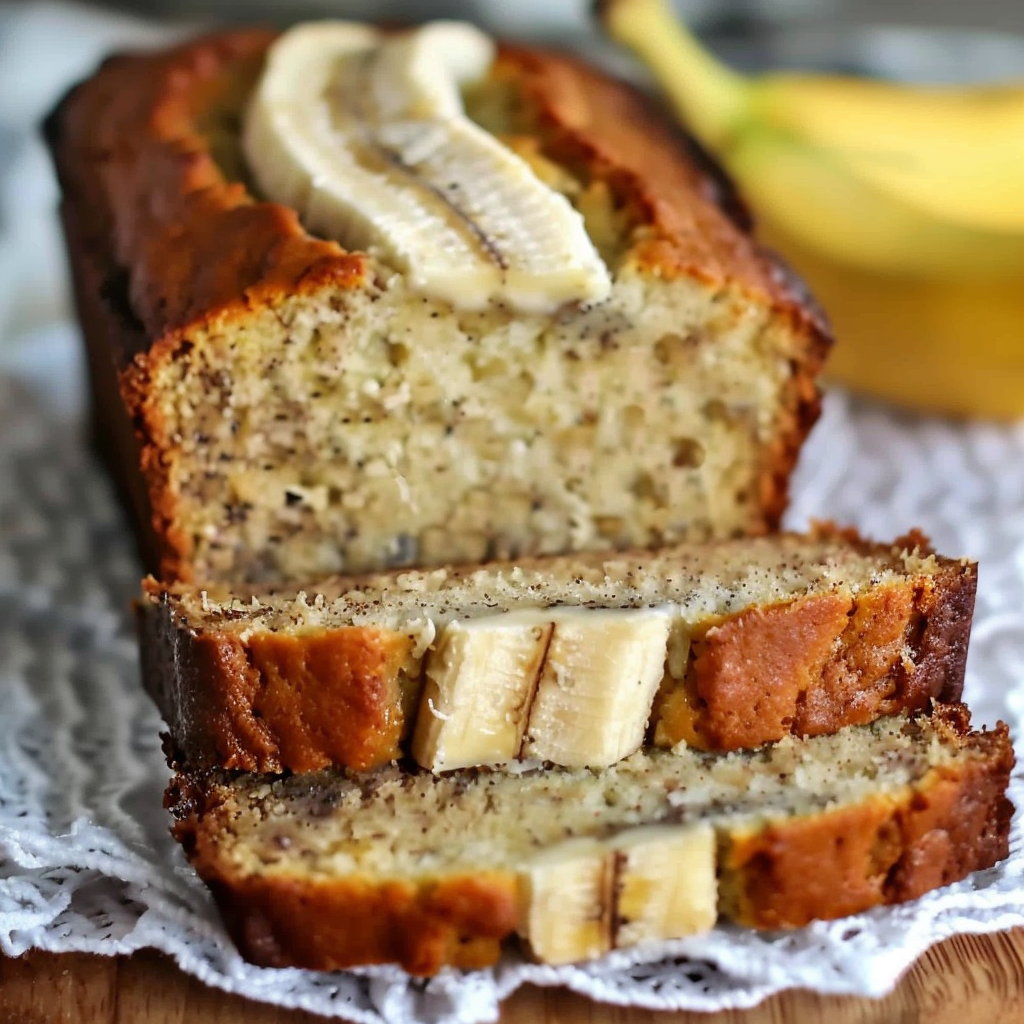
FAQs – People Also Ask
Why is my banana bread dense and not fluffy?
Dense banana bread usually means the batter was overmixed, which activates too much gluten in the flour. To keep it fluffy, mix just until the dry ingredients disappear into the wet.
Should you use baking soda or baking powder in banana bread?
Baking soda is preferred when acidic ingredients like bananas and sour cream are present. It helps the loaf rise while balancing the pH of the batter. Learn more about how baking soda works here.
Can you make banana bread with frozen bananas?
Yes. Thaw the bananas first and drain excess liquid before mashing. Frozen bananas often create even moister bread and deeper banana flavor.
How do I keep banana bread moist?
Use overripe bananas, measure flour accurately, and avoid overbaking. Wrapping the cooled loaf in plastic wrap or storing it in an airtight container helps retain moisture.
Can banana bread be made ahead of time?
Yes. Banana bread tastes even better the next day as the flavors develop. You can make it up to 24 hours in advance and store it at room temperature or refrigerate for longer freshness.
Print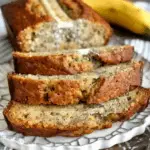
Simply Perfect Banana Bread Homemade Classic Loaf Guide
- Author: Naomi
Description
This Simply Perfect Banana Bread is a moist, rich loaf with classic banana flavor, a tender crumb, and optional crunchy walnuts or pecans. Made with ripe bananas, sour cream, and butter, this easy recipe comes together quickly and bakes up golden every time. Perfect for breakfast, snacking, or gifting, it’s a Southern-inspired take on a beloved classic—with bakery-quality results.
Ingredients
- 1 3/4 cups all-purpose flour
- 1 tsp baking soda
- 1/2 tsp salt
- 1/2 tsp ground cinnamon (optional)
- 1/2 cup unsalted butter, softened
- 3/4 cup granulated sugar
- 2 large eggs
- 1/4 cup sour cream
- 1 1/2 tsp vanilla extract
- 3 ripe bananas, mashed (about 1 1/2 cups)
- 1/2 cup chopped walnuts or pecans (optional)
Instructions
Preheat the oven to 350°F (175°C). Grease a 9×5-inch loaf pan or line with parchment paper.
In a medium bowl, whisk together the flour, baking soda, salt, and cinnamon (if using). Set aside.
In a large bowl, cream the butter and sugar together until light and fluffy.
Add the eggs one at a time, beating well after each. Mix in the sour cream and vanilla extract.
Stir in the mashed bananas until well combined.
Gradually add the dry ingredients to the wet ingredients, mixing just until incorporated. Do not overmix.
Fold in the chopped nuts if using.
Pour the batter into the prepared loaf pan and smooth the top.
Bake for 55–65 minutes or until a toothpick inserted into the center comes out clean.
Let the bread cool in the pan for 10–15 minutes, then transfer to a wire rack to cool completely.
Notes
-
Use very ripe bananas for best flavor and moisture.
-
Don’t overmix the batter—fold gently for a light texture.
-
Optional nuts can be swapped for chocolate chips or dried fruit.
-
The loaf freezes beautifully—slice and store for easy grab-and-go treats.
-
Baking time may vary slightly depending on your oven and pan type; check for doneness with a toothpick or thermometer.
